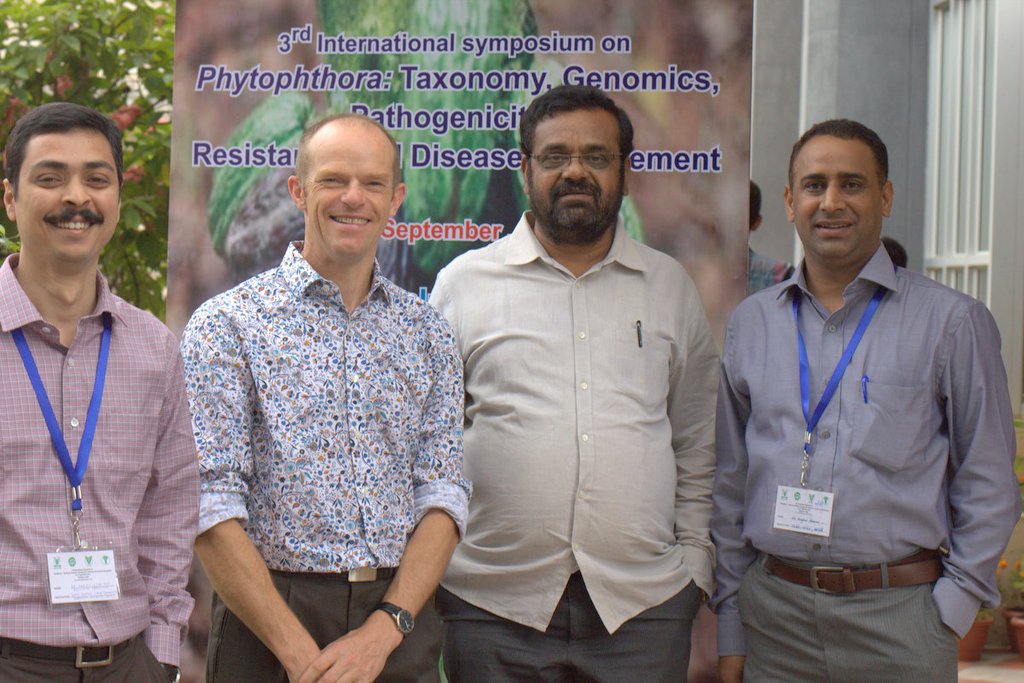AsiaBlight strengthens ties in India
India is now the third largest producer of potato in the world and at a recent meeting researchers expressed enthusiasm for links into a global collaborative network on potato late blight management.

The 3rd International Symposium on Phytophthora : Taxonomy, Genomics, Pathogenicity, Resistance and Disease Management was held last week in Bengaluru in the southern Indian state of Karnataka. The meeting provided an opportunity for David Cooke from The James Hutton Institute to share information on the EuroBlight network and meet with key late blight researchers in India.
The meeting organiser, Dr Pallem Chowdappa, formerly of the Indian institute of Horticultural Research has direct experience of the threats posed by Phytophthora infestans population change. His group documented the dramatic increase in late blight problems on potato and tomato crops since 2009 due to the introduction of the 13_A2 clonal lineage. Dr Sanjoy Guha Roy from West Bengal State University spoke about his work sampling a devastating blight epidemic in the northeast Indian states in 2014. Dr Sanjeev Sharma from the Central Potato Research Institute in Shimla presented his valuable work on the characterisation of populations in the northern states, breeding for resistance and the development of decision support systems.
In India, crop losses are especially difficult for the many smaller-scale producers who borrow money to grow each crop and generally do not have access to the full range of fungicides or specialist knowledge and management advice they require. There was agreement among the group that the establishment of a research network and co-operation on the pathogen population change within the wider AsiaBlight network would be beneficial. As a first step there was agreement to share information and data on population change in Indian potato and tomato crops.